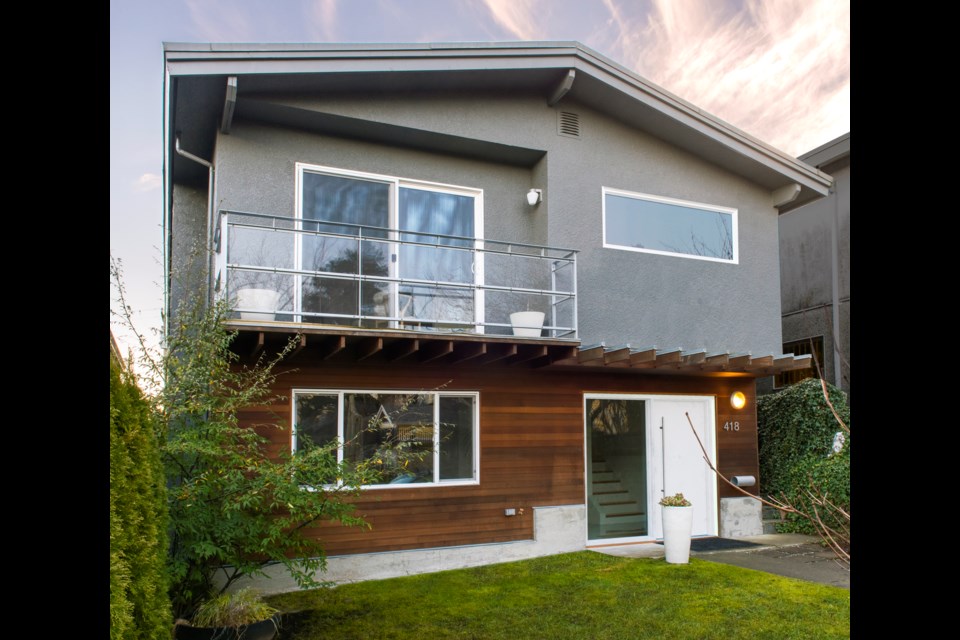The glossy white front door and sleek grey and cedar exterior of a Vancouver Special on East 22nd Avenue located not far off of Main Street reflect the modern renovations completed on the interior. But before entering the home, which was built in 1975, visitors will find a nod to its history — two small lion figures that originally guarded the home from atop brick pillars on either side of a gate. They’ve been “chromed” and are now nestled into the ivy to the right of the doorway.
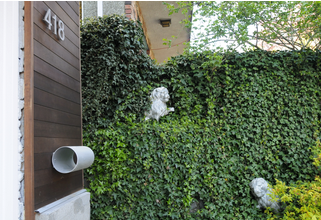
This house is among those featured on Vancouver Heritage Foundation’s April 18 self-guided Vancouver Special tour, which reveals how five homeowners mixed the old and new to reinvent their houses. It’s the organization’s sixth tour of Vancouver Specials whose popularity has soared over the past decade.
“There are a lot of people who just really like the fact that they’re a blank canvas. You take a Vancouver Special and it has a big footprint and kind of a basic layout and from that you can either stick with the Vancouver Special style and embrace it or you can completely change it, make it entirely your own and very modern. So, there’s a lot of possibilities there,” said VHF spokeswoman Kathryn Morrow.
The possibilities are what convinced Scott Massey and Laura Quilici to buy their 2,278 square-foot Vancouver Special on East 22nd in 2007. They live in it with their daughter Lola, 10, and have spent eight years painstakingly renovating it.
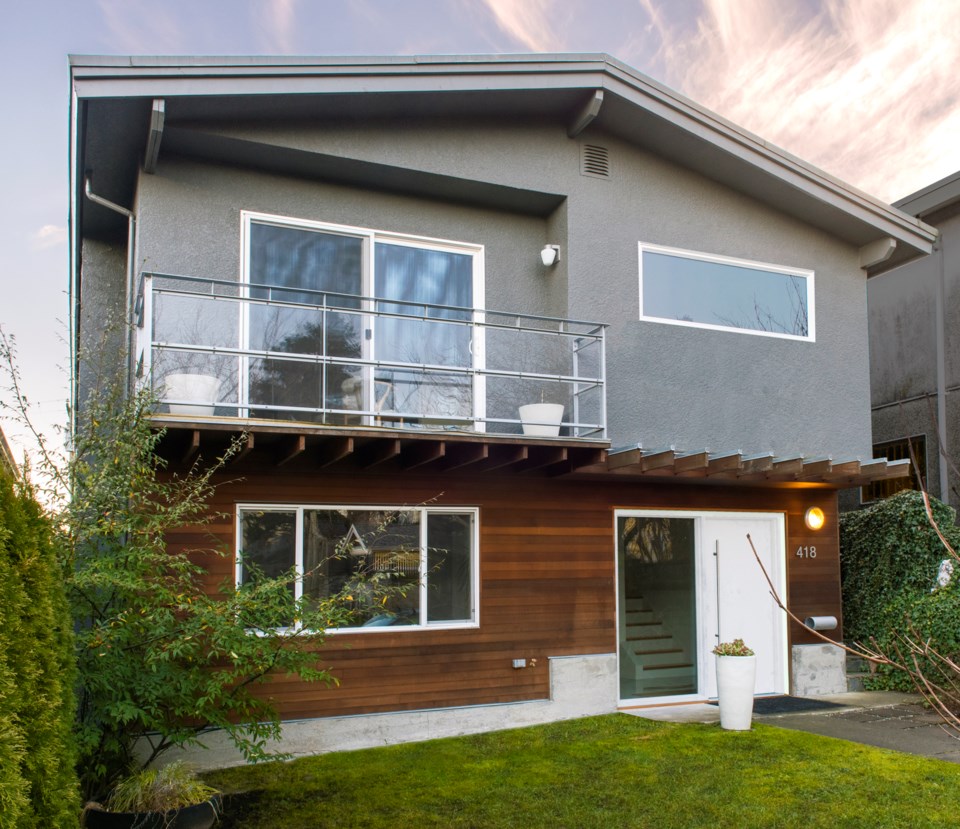
“I would call myself a fairly strict modernist in a lot of ways and especially architecturally speaking. I’m very drawn to modernist architecture and I can envision a diamond-in-the-rough situation. When we saw this house, it was all original and I knew we could make something cool,” Massey said. “Some people have called the
Vancouver Special a poor man’s modern house because the task is stripping a lot of the ornament away. Once you’ve done that, you’re left with a pretty clean shell — a square cornered, square-roomed shell. It really does lend itself to a modernist aesthetic.”
Massey has lived in the city since 1992, while Quilici was born in Vancouver to Italian parents.
The couple was determined to buy a Vancouver Special, but Quilici’s parents, as well as other friends and family, weren’t initially convinced it was a good idea.
“[Her parents] worked so hard to get away from the aesthetic and cultural definitions that come with the Vancouver Special as a housing style,” Massey said. “So when we were looking for a Vancouver Special, there wasn’t a lot of enthusiasm for sure, but they’ve come around now.”
The renovation was completed in two phases. Massey did much of the work to cut costs and when necessary called in favours from tradespeople friends and family.
The couple rented out the ground floor for the first seven years, only taking it back for their own use recently.
During the years-long project, the house was gutted down to the studs, electrical and plumbing systems were replaced, and new insulation added. There was no budget for major structural changes, but some non-structural walls were taken down to create open-plan living on the second floor, which features a spacious L-shaped kitchen, dining and living area.
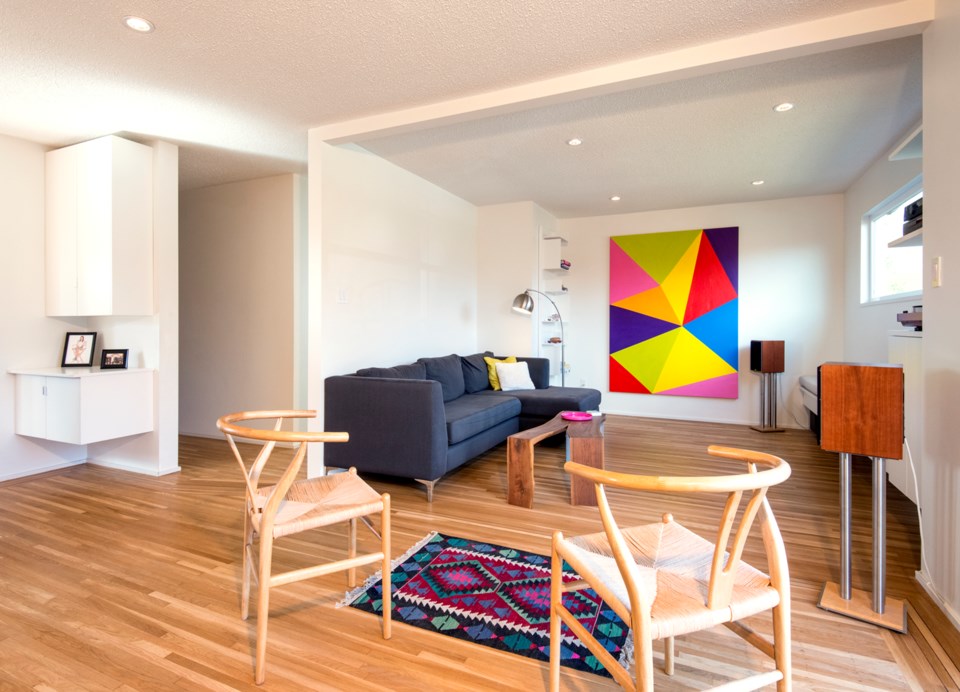
Some original elements were retained, including white oak floors upstairs, which were refinished, the popcorn ceiling and two brick fireplaces that were cleaned up and painted pure white.
“The big factors were there were these two functioning fireplaces that we could keep. They’re existing non-conforming and to have an open fireplace in the city nowadays is really rare. And they were beautiful. They were horrendous to look at until we cleaned them up and painted them, but they’re these beautiful elements of the ’60s/’70s architecture that we were happy to retain,” explained Massey, who’s more than satisfied with the home’s final look.
“It’s very open-plan. It’s very clean. It’s very white… It’s very bright. There’s so much light that floods into the house, it’s amazing. There were difficulties and changes and unexpected things along the way, but overall I’m thrilled with the house. I love it. We love it. And it is very much what I originally thought we would accomplish. [But] I didn’t think it would take this long.”
Quilici is equally happy, but acknowledges the style is not necessarily for everyone. “But if you appreciate a modernist aesthetic, it works.”
She said they learned “a ton” from the project and she’s pleased they realized the potential they first envisioned.
So what does Quilici love best about the house?
“That it’s done,” she said.
For more information and tickets for the Vancouver Heritage Foundation’s Vancouver Special self-guided tour, go to vancouverheritagefoundation.org.
PRESERVING VANCOUVER SPECIALS?
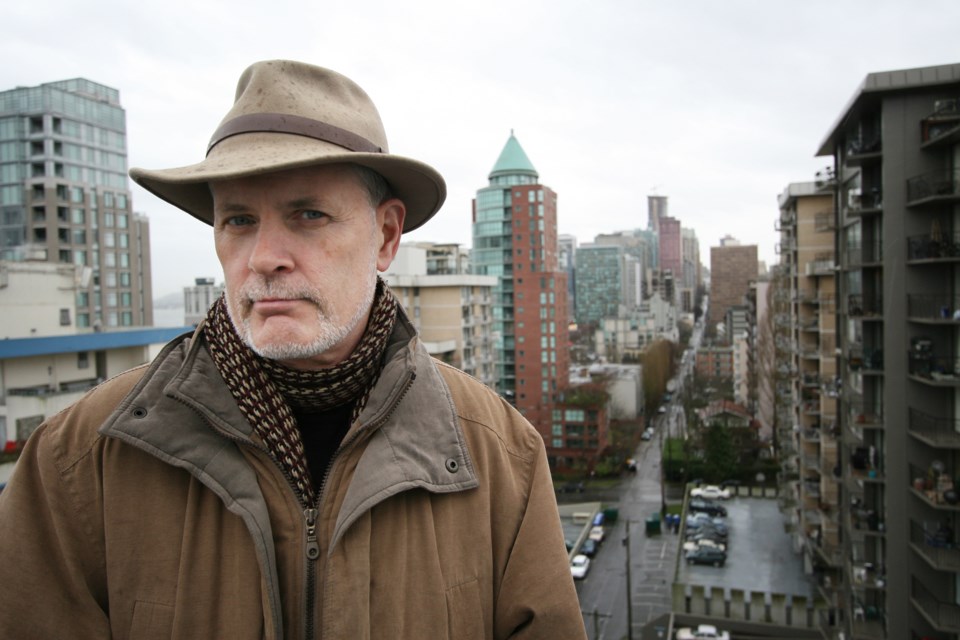
Vancouver Specials may be bland — neither beautiful nor ugly, according to former city councillor Gordon Price, but he’d still like one of them, or even a streetscape, preserved.
“The definition of [heritage] has broadened out to what is culturally significant to a community as it is expressed in how they build,” he said, adding that the Vancouver
Special has profound cultural significance and is an example of how builders and buyers during that time tried to achieve housing affordability.
“In so many ways it’s a remarkable testament to the energy and strategy of people who have shaped this city and this region. Really, they were looking for a way to maximize the density with a simple form of construction that would be affordable, particularly for immigrants’ extended families who were putting down roots in Vancouver and becoming Canadians.”
While there is no shortage of Vancouver Specials in the city today, Price, who writes a blog called Price Tags and is director of the city program at Simon Fraser
University, said that might not always be true, especially ones that haven’t been renovated by subsequent generations.
“It would be expensive to do. Probably the way it would be done today, if it was so decided that it was a serious idea worthy of merit, and a developer had acquired, say, a row of Vancouver Specials, maybe you could save one of them and allow increased density of the rest of the site,” he said.
Price would like the house to be furnished in the style of the time and for it to include the story of its inhabitants.
“I think it would be important, for whatever Vancouver Special that was retained, that it should keep its context. It shouldn’t be moved and indeed a streetscape of Vancouver Specials would even be better — so that you could actually see what the impact was of that form of building. You don’t have any problem finding it at the moment, but in the future absolutely. Maybe not in our lifetime, but certainly in the next century it will be hard to find a remaining Vancouver Special as it was originally built,” he said.
